Part 1 – Introduction to TNUoS and ITPEnergised unique modelling approach
Part 2 – Optimising Transmission Connected Colocation Projects and the impact of TNUoS
Part 3 – Optimising Transmission Connected Colocation Projects and TNUoS Connection and Use of System Code (CUSC) Modification Proposals (CMPs)
Part 4 – Colocation TNUoS versus Standalone technology TNUoS – Scottish Site Example
Part 5 – Colocation TNUoS versus Standalone technology TNUoS – 100MW Technology Units
Part 4 Colocation TNUoS versus Standalone technology TNUoS – Scottish Site Example
In this Part 4 we consider the potential implications of the CMPs impacting TNUoS in colocation projects through a Scottish site example. Figures are illustrative. This series builds on our original insights series on colocation which can be found here. Our geospatial team has helped to show the changes visually on UK map layers.
For the first example, we have taken the same site configuration as used in the CMP316 workgroup meetings. For negative tariffs (or tariff elements in the case of WACM1) a peak output 90% of maximum capacity is assumed for all cases.

Using the last year of the ESO 10-year projection, this gives four potential outcomes as shown in graph and map figures 1 and 2 below:
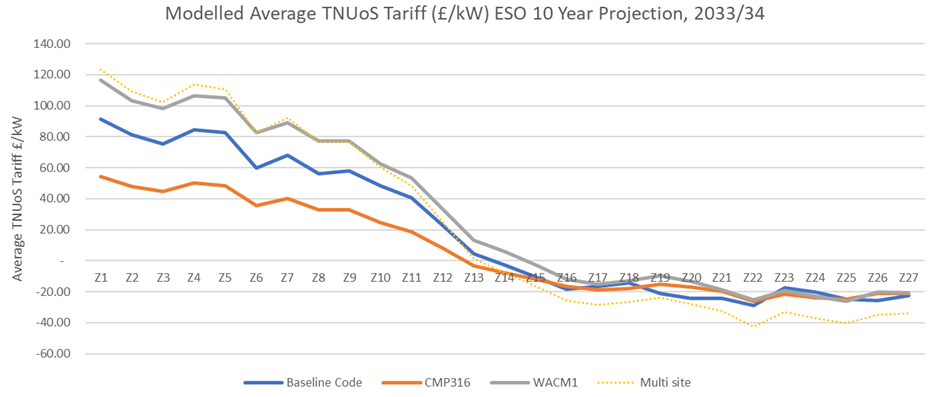
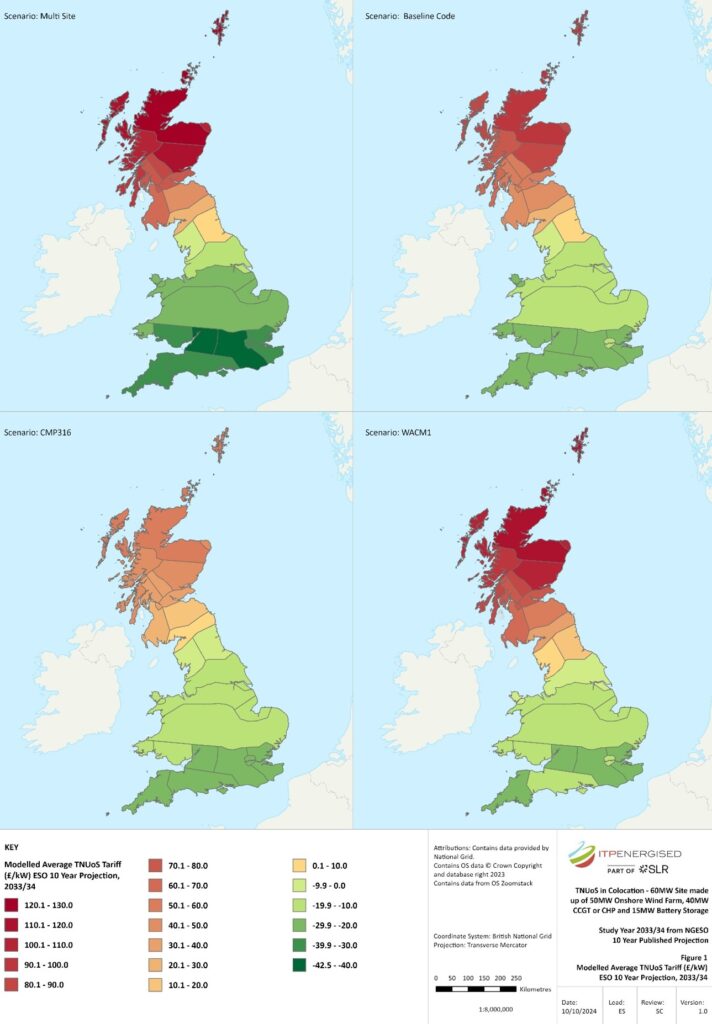
These four outcomes are as follows:
- “Baseline Code”. The interpretation of the current CUSC would use the dominant fuel type (Intermittent Onshore Wind) with an ALF based on total site output and TEC, being 79.9%.
- CMP316 is how the tariffs would look if the CMP316 ‘Original’ solution were to be implemented
- WACM1 is how the tariffs would look if the CMP316 ‘Original’ solution were to be implemented
- Multi-Site shows the average tariffs should each of the fuel types be registered as a site, with TEC set to that fuel type’s maximum output.
The ‘Average’ tariff calculated in all four cases is based on total cost of the scenario divided by the given site TEC of 60MW.Looking at the profile over zones, it would be interesting to see how this colocated charging changes over time. We have selected four zones that look like they will offer a good spread of costs: zone1, zone 6, zone 11 and zone 22.
For this we have used an amalgamation of the last few years’ final published tariffs out to 2024/25, the 2024 ESO 5 year forecast out to 2029/30, and then their 2023 10-year projection out to 2033/34.
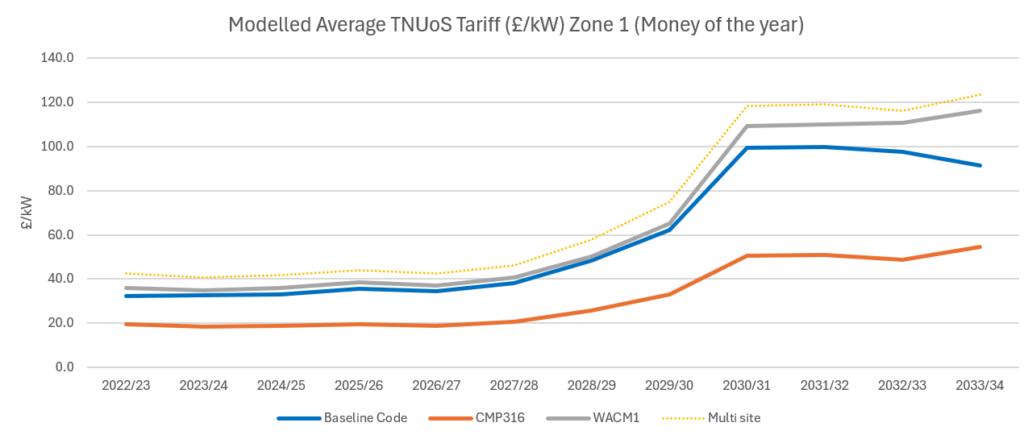
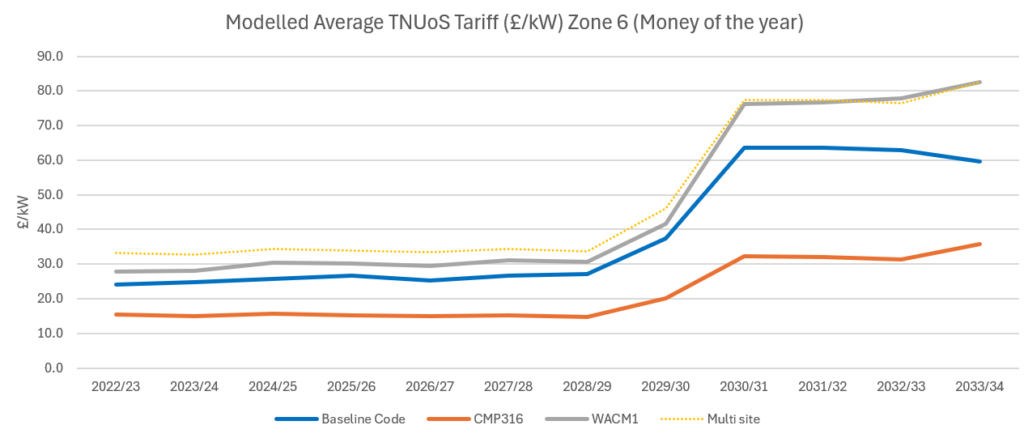
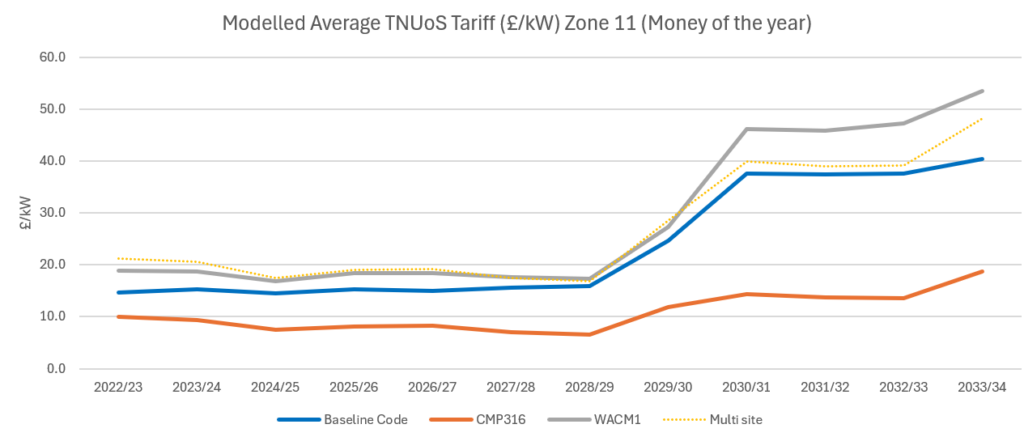
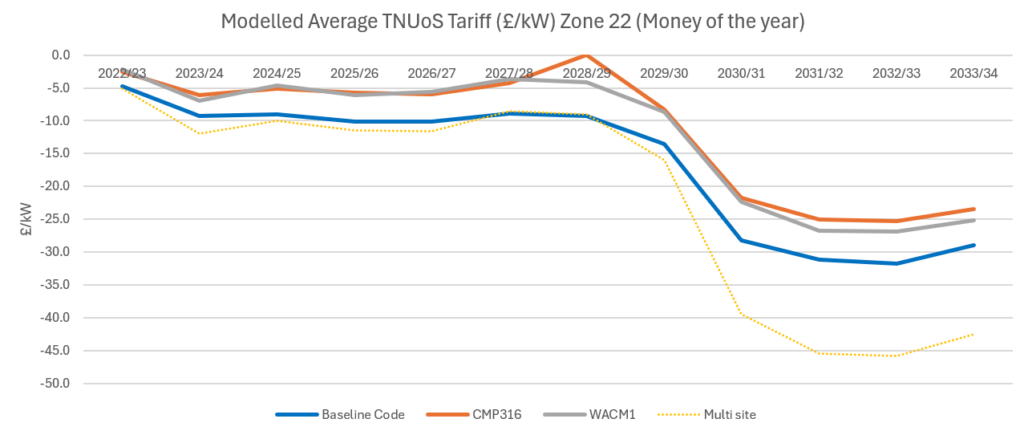
As can be seen in this analysis, where colocation is available as a potential income stream to a developer, where this is potentially reduced under CMP316 WACM1, the developer has the option of connecting separate sites to recover that lost income. However, for sites that are paying TNUoS as a charge, there is no such option and CMP316 WACM1 will reduce the appetite for colocation in Scotland and the north of England.
WACM1 assumes that the TNUoS incremental model used for calculating tariffs is fully reflective of the most efficient way to manage the transmission network. However, this model does not consider issues such as constraints, management of these, or any form of under or over-generation since it always assumes a fully balanced system. The potential benefits of colocation are lost in this process, and there is a risk that growth in this area will be stunted in its infancy based on misleading calculations.
One important observation is that WACM1 does appear to more closely model the costs of the individual fuel types of the site, where the overall TNUoS is a charge. It should be noted that this is only one example in a multitude of possibilities. However, for this example a question would be:
- Is the purpose of CMP316 and colocation generally to promote colocation to fully utilise the connections available on the network, since the network assessment to determine free capacity is not fully aligned to the TNUoS tariff calculations?
- If WACM1 were to be implemented, this would
- Remove the benefit of the current CUSC interpretation, giving no benefit to a colocated generation site with a positive cost (typically north of York) over registering several sites for the component fuel types.
- Sites receiving a credit for colocation would continue to benefit from a greater income by registering several sites rather than a single colocated site.
You can download a PDF of Part 4 here.
Please contact George Douthwaite at george.douthwaite@itpenergised.com for more information on the TNUoS tariff prediction service and Peter Lo at peter.lo@itpenergised.com for portfolio and colocation sizing optimisation.
